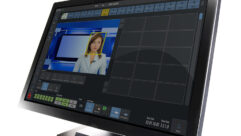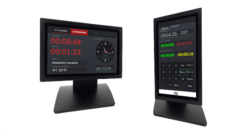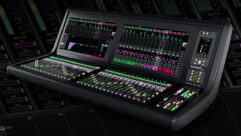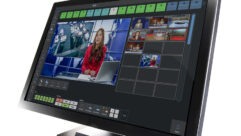
At Contemporary Research, we believe that the ability to trigger emergency alerts should be an integral component of an facility-wide video content and control system. This type of system has a key advantage over other methods of emergency alert video broadcasting- in about a second the system can turn on every TV, change the tuners to the emergency channel, and raise the volume.
Our Display Express software and through-the-RF Coax control components have been in place in facilities for over 15 years; including stadiums and arenas, schools and colleges, civic centers and EOCs, and houses of worship.
We also offer EAS broadcasting with our QMOD HD Modulator-IPTV Encoders, a relay trigger can switch all the programs to a common EAS video feed. That’s great, but without facility-wide control, there is no assurance the message is seen and heard.
Through-the RF Control
Our Display Express system delivers control over the same RF coax as the site’s subscription and in-house video channel. The micro control data channel travels through the gap between channels 4 and 5, so adding control does not affect any other programs.
A small IR or RS-232 controller resides at each TV. The unit tunes into the control channel, and sends the rest to the TV’s RF input. The control code and automation for the specific make and model of TV is stored inside the controller. When commands are sent through the system, each controller looks for it’s own address, and responds, changing the power, channel, or volume of the TV. In addition, it can store the current power and channel status, a key feature for use in emergency alerts.
Display Express Software
Many sites use our Display Express software, which can reside in Windows PCs or servers, and operates with easy to use Web pages for setup, control pages and scheduling. Custom AMX, Crestron or other sources can send commands directly or to the Display Express software.
Users can create Presets, that link commands to individual, groups or all TVs. Presets can be placed into Web control panels or launched by a schedule.
Alerts
Users can also create Alerts, a special kind of Preset. Like a Preset, an Alert can, for example, turn all the TVs on, change to emergency channel 22-1, and raise the volume. It also tells the TV controller to remember the current power state and channel before sending the commands. When an Alert ends, it tells the controllers to return to the saved channel and power state.
In this way a very complex and challenging action, storing and recalling the state of hundreds of TVs from a central application, is reduced to simplicity with shared intelligence.
Like Presets, Alerts can be launched by Web control panels, though we expect many sites will use these for testing. The better solution is to send Telnet commands to start and end Alerts from a site’s emergency center to the Display Express software (which, in IT terms is a service that runs on the PC or server).
Any number of Alerts can be active at the same time. For emergency applications, this can be used to broadcast an alert to many buildings on the campus, but not to the affected building.
Applications
All CR’s Display Express sites have the ability to set up and use emergency alerts, but we don’t always know when they use it. It is interesting how sites are using the feature for creative applications.
- The gallery at the New York Stock Exchange has displays along the walls the show images of fine art. A programming schedule uses the Alert function to send a video clip broadcast to all the TVs; then reverts back to the art images at the end.
- A large casino uses an AMX system to detect when someone hits a jackpot on a slot machine, the system sends an Alert to the DX server, which sends an Jackpot video the the nearby screens. With this technique, the site can change the specifics, such as which TVs play and what channel is used, without changing the AMX programming.
- A corporate site uses an in-house channel for digital signage, but can switch all TVs to a local news channel for weather alerts.










